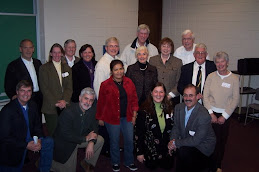A reflection on the readings for August 29, 2010
Sir 3:17-18, 20, 28-29, Heb 12:18-19, 22-24a, Luke 14:1, 7-14
Does the Church Really Need More Monsignors?
The word on the street is that the Archdiocese of Chicago is about to announce a number of new monsignors among the priests of Chicago. The term monsignor is an honorary title that traditionally was given to priests because of some accomplishment in the Church or as a reward in the hierarchical system of the priesthood. Traditionally, there were two kinds of monsignors: Right Reverend Monsignors and Very Reverend Monsignors. I never quite understood the distinction, but it was apparent that the Very Reverend perhaps were not as reverend as the Right Reverend. Right Reverend wore red trim on their cassocks and were monsignors for a lifetime. Very Reverend wore purple trim on their cassocks and the title could be taken away at the end of a pontificate. Right Reverend Monsignors had roles like that of rectors of seminaries. The Very Reverend were involved in Archdiocesan offices or were pastors of cathedra
but it was apparent that the Very Reverend perhaps were not as reverend as the Right Reverend. Right Reverend wore red trim on their cassocks and were monsignors for a lifetime. Very Reverend wore purple trim on their cassocks and the title could be taken away at the end of a pontificate. Right Reverend Monsignors had roles like that of rectors of seminaries. The Very Reverend were involved in Archdiocesan offices or were pastors of cathedra ls or basilicas. The custom of naming some priests monsignors fell to the wayside after the Second Vatican Council, but now it is making a comeback. The meaning of the word monsignor is "my lord".
ls or basilicas. The custom of naming some priests monsignors fell to the wayside after the Second Vatican Council, but now it is making a comeback. The meaning of the word monsignor is "my lord".
In my first assignment as a deacon, I lived with two monsignors, the retired pastor and the pastor at the time. Sometimes the two monsignors would have too much to drink before dinner. The dinner could be an anxiety producing event for a twenty-five year old learning the ropes. The pastor of that parish liked being called monsignor. I, for one, called him monsignor; he was the boss. But there was an associate pastor there, a middle-aged priest, who one day said to the pastor, "Look, the title monsignor means 'my lord'. You are not my Lord. Jesus is my Lord. You are Don; and I will continue to call you Don." The priest calling monsignor "Don" made for some more nervous moments at dinner.
The Catholic hierarchical system is a curious entity. When Jesus preached the Reign of G od, he called people to gentleness, mercy, service, self-sacrifice, justice, but early on in the church (especially when Constantine not only liberated the Christians from persecution, but made Christianity the state religion), the Church began to take on more and more trappings of Roman hierarchical power. The papacy, the role of bishops, monsignors, and in some cases priests, began to take on monarchical imagery. In fact, in terms of cardinals and archbishops, we actually began to speak of princes of the church. At liturgy, fine expensive vestments were worn that resembled the clothes of monarchs. "Shepherds", as bishops should be, walked around with staffs made of gold or which were gold-plated. They began to wear headgear that resembled crowns. The leaders of the Church began to dress and act in ways diametrically opposed to the lifestyle Jesus calls us to.
od, he called people to gentleness, mercy, service, self-sacrifice, justice, but early on in the church (especially when Constantine not only liberated the Christians from persecution, but made Christianity the state religion), the Church began to take on more and more trappings of Roman hierarchical power. The papacy, the role of bishops, monsignors, and in some cases priests, began to take on monarchical imagery. In fact, in terms of cardinals and archbishops, we actually began to speak of princes of the church. At liturgy, fine expensive vestments were worn that resembled the clothes of monarchs. "Shepherds", as bishops should be, walked around with staffs made of gold or which were gold-plated. They began to wear headgear that resembled crowns. The leaders of the Church began to dress and act in ways diametrically opposed to the lifestyle Jesus calls us to.
For full reflection, go to http://ncepr.com/2010/08/does-the-church-really-need-more-monsignors/

To the Wrong Irreverent Ex-Transitional Deacon (/Priest?)...
ReplyDeleteEmperor Constantine did not establish Christianity as the state religion of the Roman Empire:
-The Edict of Milan released Catholicism from state persecution and restored their right to own property.
-Constantine 'supported' Christianity, insofar as it remained a coherent bloc within the state--so, when there were religious disputes within the Christian community at that time, Constantine helped squash them.
-Constantine was the first Christian emperor, but he was more of a religionist than a Christian in governing style: that he was willing to foster any religion for the benefit of social life.
Your statement that the Edict of Milan established Christianity as the state religion is tantamount to saying that Russia established Judaism as its state religion, after it ended official persecution of Jewry there. Ridiculous.
Please shape up, and stop writing this garbage.
Hi great reading your bllog
ReplyDelete